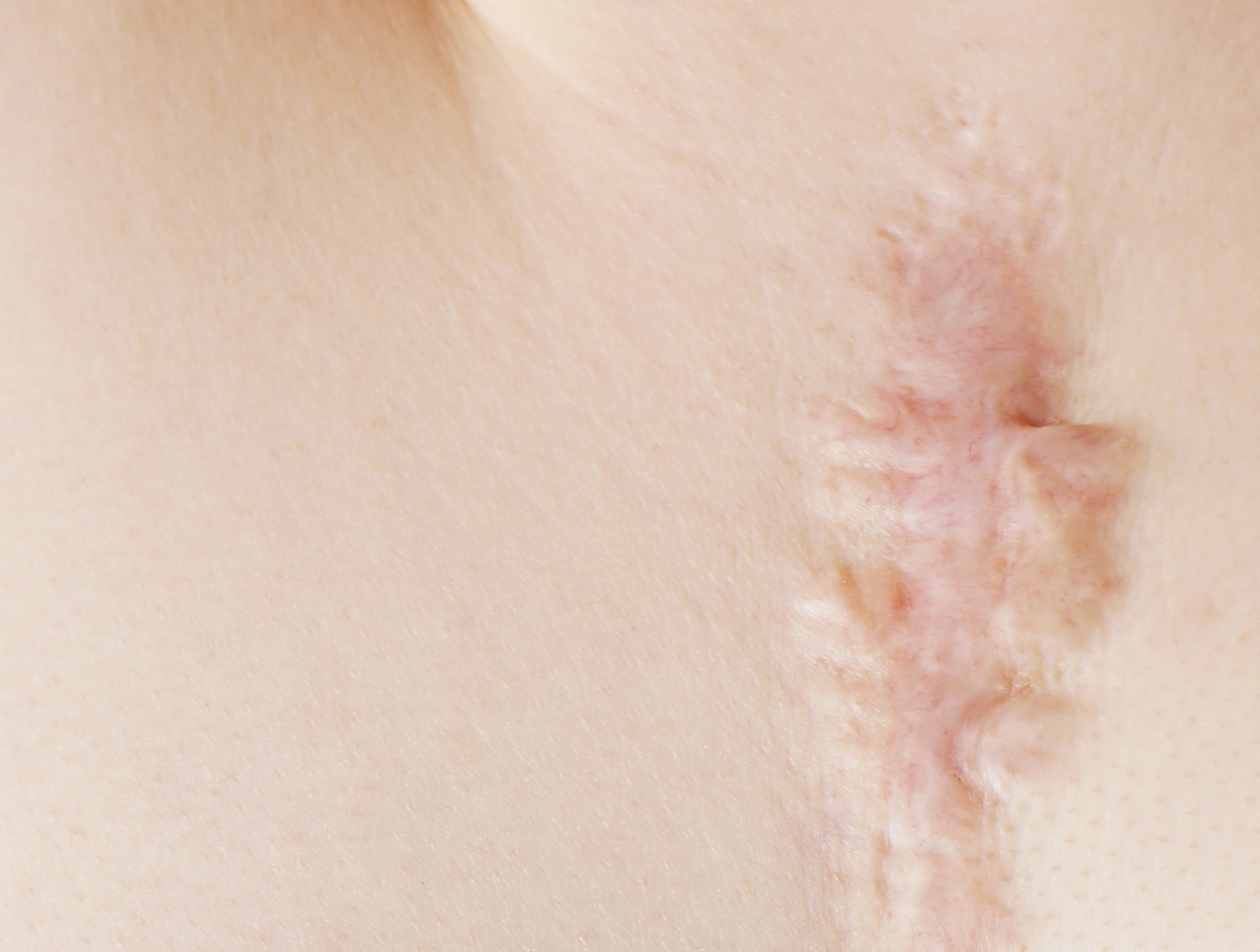
Scarring after surgery or trauma to the skin can be a major patient concern. “We’ve developed medical and surgical techniques, as well as post-procedure treatments that can really minimize scarring while optimizing cosmetic outcomes,” says Dr. Adam Mamelak, board certified dermatologist and skin surgeon at Sanova Dermatology in Austin, Texas. “What patients need to recognize is that not all scars are the same, and they can be treated in different ways.”
Keloids
Keloids are raised scars that form after an injury has healed. “Surgery, piercings, acne cysts are just a few things that can give rise to keloid scars,” says Dr. Mamelak. This area will be comprised for an irregular fibrous tissue. These scars tend to form mostly on the chest, back, shoulders, and earlobes. “In general, keloid scar tissue extends beyond the incision or area of injury.” Additionally, they can be found on both men and women alike. They are, however, less common among children and the elderly, and people with darker skin tones run a higher risk.
It is important to note that a keloid will not only affect the pigmentation and color of the skin, but there can also be itchiness, redness, unusual sensation and pain. Only about 10% of the population will get keloids. Finally, you may not know that you run the risk of forming these types of scars until it’s already happened.
These types of scars can be difficult to treat, but not impossible. Some keloid treatment methods, such as injectable steroids, can be used to help to flatten the scar, which in turn helps to diminish its appearance. Additionally, the keloid can be surgically removed, after which you will be closely monitored through the healing process. With a controlled healing process, a new keloid can be prevented.
Hypertrophic Scars
A hypertrophic scar can look similar to a keloid. However, these types of scars occur more often, don’t get as big as keloids. “Hypertrophic scars can be thick, but don’t extend beyond the confines of the initial skin injury,” explains Dr. Mamelak. As well, they can possibly fade over time and affect all races of people. These scars are caused by an excessive amount of collagen that builds up and creates a raised and/or thick scar. These are most commonly formed at the sites of pimples, cuts and burns, but can be treated more easily than keloids.
Using steroids, pressure dressings, vitamins, chemical peels, laser therapy, and even surgery can help treat these types of scars.
Contact Us
Keloids and hypertrophic scars are not the same thing; although initially they may look similar, they are very different. It’s important to understand the type of scar that you have, which will help you find the best solution to your problem. To learn more about how we can help you and any scarring that you may have, please contact us.
Join Us

